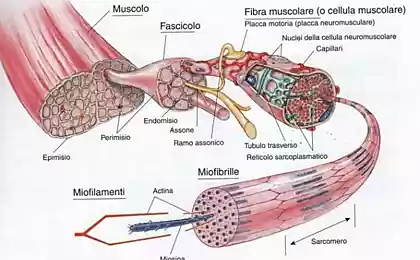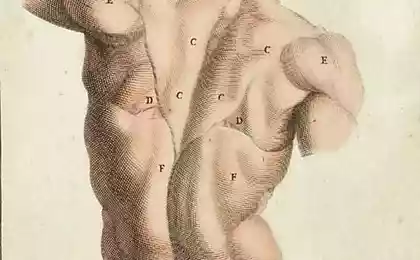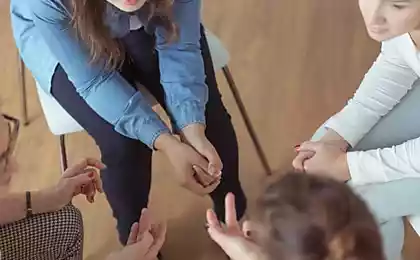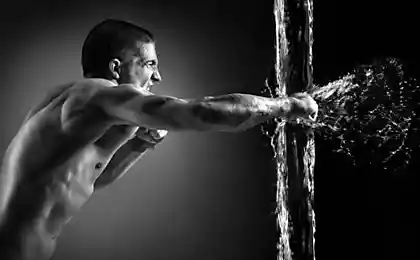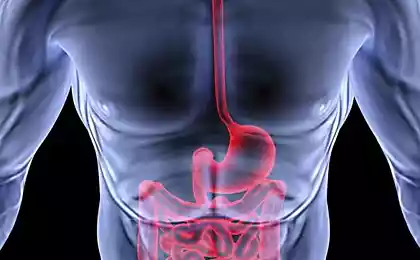450
An effective technique in overcoming emotional problems
A significant part of muscle tension is acquired and with the help of regular exercise certain exercises can be rid of.
Relaxation is a skill that you can develop and use to overcome emotional problems.
The basics of the training of relaxation in 1929 he described in his book "Progressive relaxation" Edmund Jacobson.
It is relying on the results of the experiments proved that emotional reactions spill into the body in the form of muscle tension. The stronger the emotional tension, the more pronounced skeletal muscle tension. This reaction is due to the presence of so-called cortico-muscular connections. Excessive tension of the cerebral cortex leads to immediate reaction of excitation of muscles. There is also a feedback — relaxed muscles create conditions for the inhibition of activity of cells of cerebral cortex.

We offer to your attention a modification of this method achieves state of relaxation through strain, using the strain (produced by rapid and intense static muscle tension) and the subsequent natural physiological muscle relaxation.
Training relaxation:
All exercises are done on the same principle:
Counting, do not fix the attention on the account. Read at your own pace, slowly, as you wish. The third and fourth stage can be combined with a lack of time.
The sequence of work with muscles is. Each exercise is done twice. Exercises are cross, i.e., "left shoulder — right shoulder", "left forearm — right forearm".
I. let's Start with the muscles in the arms and shoulder girdle.
1) the voltage maximum by raising the shoulder.
2) raise the hand to shoulder (strain the biceps, like a bodybuilder).
3) Now deploy the muscles of the forearm. The forearm is the part of the hand situated between the wrist and elbow joints. To efficiently strain the muscles of the forearm Flex the hand at the wrist joint, as close fists to the inner parts of the forearms.
4) the same to the back side of the forearm
II. The muscles of the legs
1) the toes are compressed in a fist
2) toe stretches as high up as possible
3) the toe stretches forward
III. Breath
On the first "one-two-three-four" — breath
On the second "one-two-three-four" — pause
On the third "one-two-three-four" — exhale
On the fourth "one-two-three-four" — pause
IV. Neck — additionally, in the case of difficulties with the relaxation of the neck muscles.
1) the head is tilted back
2) head tilted forward
V. Face
1) the maximum raise eyebrows ("surprise")
2) raise the nose ("disgusted")
3) the maximum stretching of the lips ("smile")
4) compression of the jaws
5) zamurovannye
Then do exercises for the face, 2,3,4,5 at a time.
At the end you can also do all these exercises "wave" gradually stretch all muscle groups.
If you feel the remaining tension in some group of muscles, repeat exercises for that group.
Exercises can be done before bed, or in a situation when you need to remove emotional stress. After prolonged use of the complex to achieve relaxation is enough tension one muscle group — for example fists.published
Author: Alexander Kolosov
P. S. And remember, only by changing their consumption — together we change the world! ©
Join us in Facebook , Vkontakte, Odnoklassniki
Source: www.b17.ru/blog/16599/
Relaxation is a skill that you can develop and use to overcome emotional problems.
The basics of the training of relaxation in 1929 he described in his book "Progressive relaxation" Edmund Jacobson.
It is relying on the results of the experiments proved that emotional reactions spill into the body in the form of muscle tension. The stronger the emotional tension, the more pronounced skeletal muscle tension. This reaction is due to the presence of so-called cortico-muscular connections. Excessive tension of the cerebral cortex leads to immediate reaction of excitation of muscles. There is also a feedback — relaxed muscles create conditions for the inhibition of activity of cells of cerebral cortex.

We offer to your attention a modification of this method achieves state of relaxation through strain, using the strain (produced by rapid and intense static muscle tension) and the subsequent natural physiological muscle relaxation.
Training relaxation:
All exercises are done on the same principle:
- You do it to yourself or out loud — "one-two-three-four", while gradually tensing the appropriate muscles. On the fourth count as muscle tense.
- The following four accounts (the"one-two-three-four"), you keep maximum tension in the muscles and try to stretch them even more. You can use your imagination. For example, if you clench your fist, at this stage you imagine that you need to crush the ball. On the count of four you abruptly stop the voltage, for example, "throwing" hand.
- At the next stage you just listen to the sensations in the hand may feel tingling, shiver, throb of the blood. Also consider "one-two-three-four."
- The last stage — at the expense of "one-two-three-four" can you imagine images of relaxation in those muscles, which are currently working. It could be semolina, warm honey, boiled pasta, all that comes to mind.
Counting, do not fix the attention on the account. Read at your own pace, slowly, as you wish. The third and fourth stage can be combined with a lack of time.
The sequence of work with muscles is. Each exercise is done twice. Exercises are cross, i.e., "left shoulder — right shoulder", "left forearm — right forearm".
I. let's Start with the muscles in the arms and shoulder girdle.
1) the voltage maximum by raising the shoulder.
2) raise the hand to shoulder (strain the biceps, like a bodybuilder).
3) Now deploy the muscles of the forearm. The forearm is the part of the hand situated between the wrist and elbow joints. To efficiently strain the muscles of the forearm Flex the hand at the wrist joint, as close fists to the inner parts of the forearms.
4) the same to the back side of the forearm
II. The muscles of the legs
1) the toes are compressed in a fist
2) toe stretches as high up as possible
3) the toe stretches forward
III. Breath
On the first "one-two-three-four" — breath
On the second "one-two-three-four" — pause
On the third "one-two-three-four" — exhale
On the fourth "one-two-three-four" — pause
IV. Neck — additionally, in the case of difficulties with the relaxation of the neck muscles.
1) the head is tilted back
2) head tilted forward
V. Face
1) the maximum raise eyebrows ("surprise")
2) raise the nose ("disgusted")
3) the maximum stretching of the lips ("smile")
4) compression of the jaws
5) zamurovannye
Then do exercises for the face, 2,3,4,5 at a time.
At the end you can also do all these exercises "wave" gradually stretch all muscle groups.
If you feel the remaining tension in some group of muscles, repeat exercises for that group.
Exercises can be done before bed, or in a situation when you need to remove emotional stress. After prolonged use of the complex to achieve relaxation is enough tension one muscle group — for example fists.published
Author: Alexander Kolosov
P. S. And remember, only by changing their consumption — together we change the world! ©
Join us in Facebook , Vkontakte, Odnoklassniki
Source: www.b17.ru/blog/16599/


